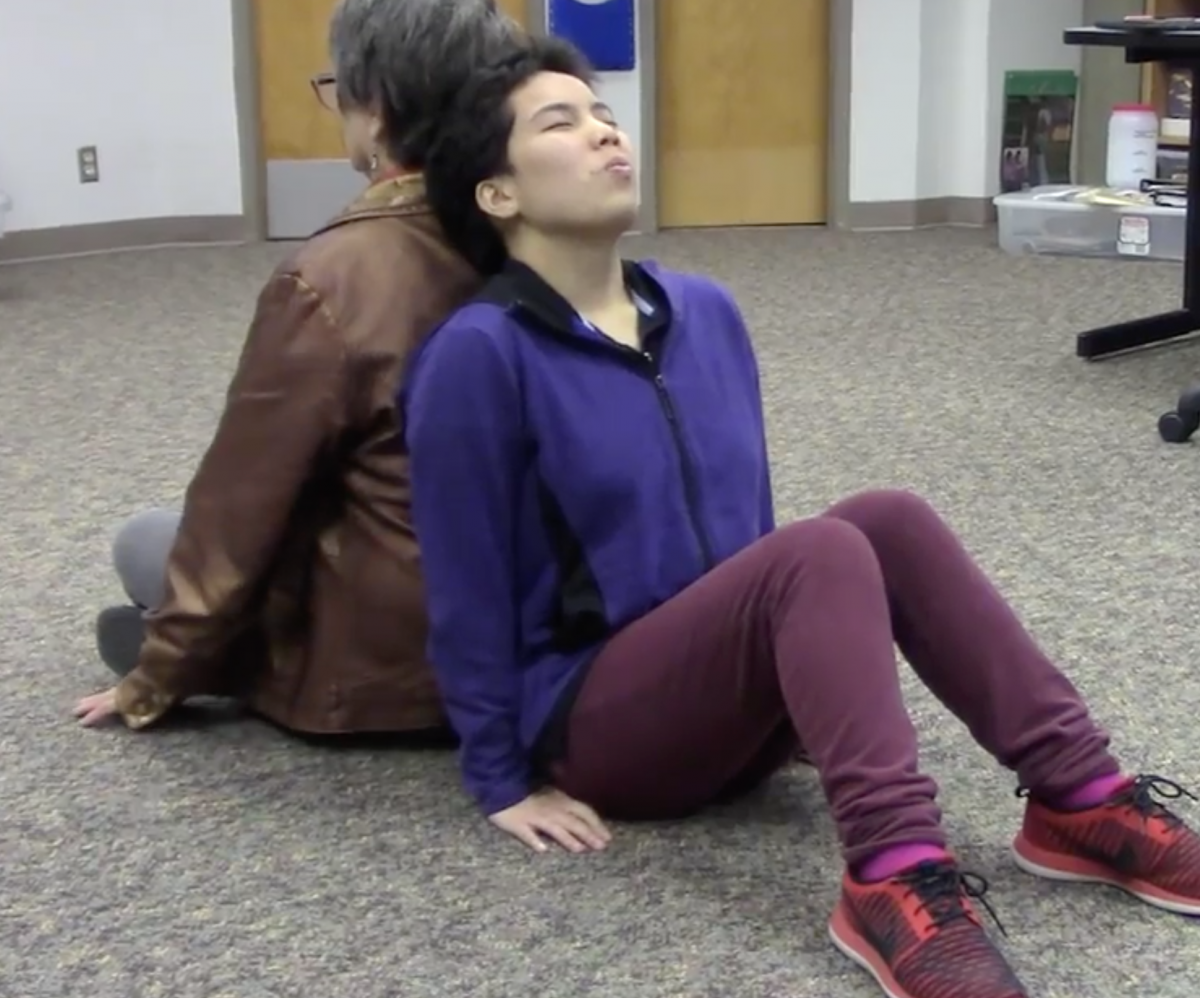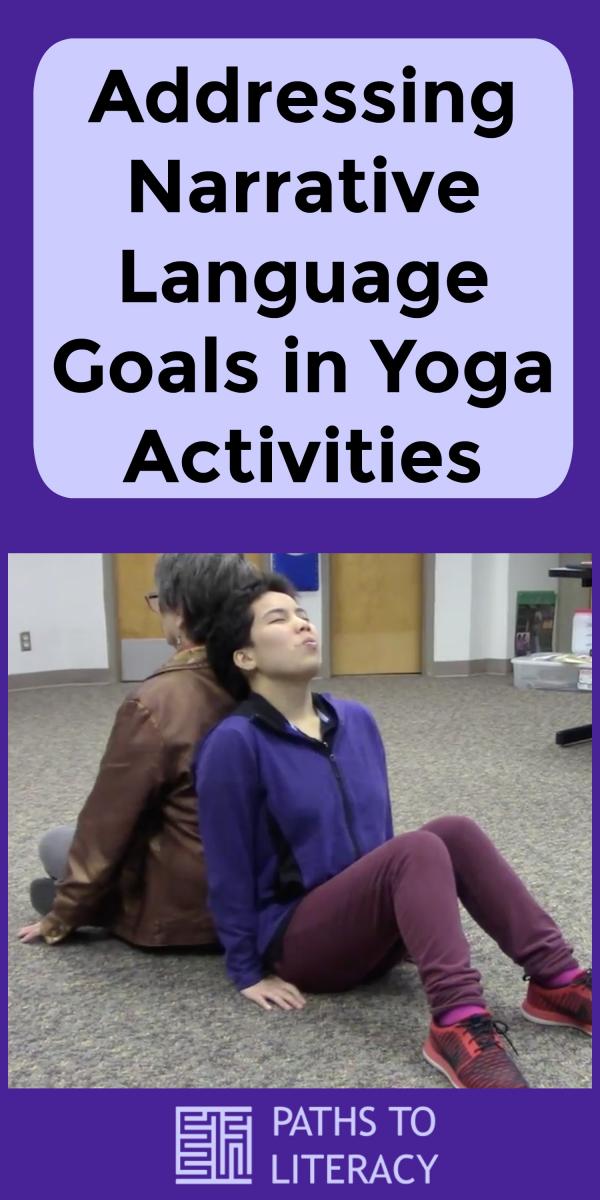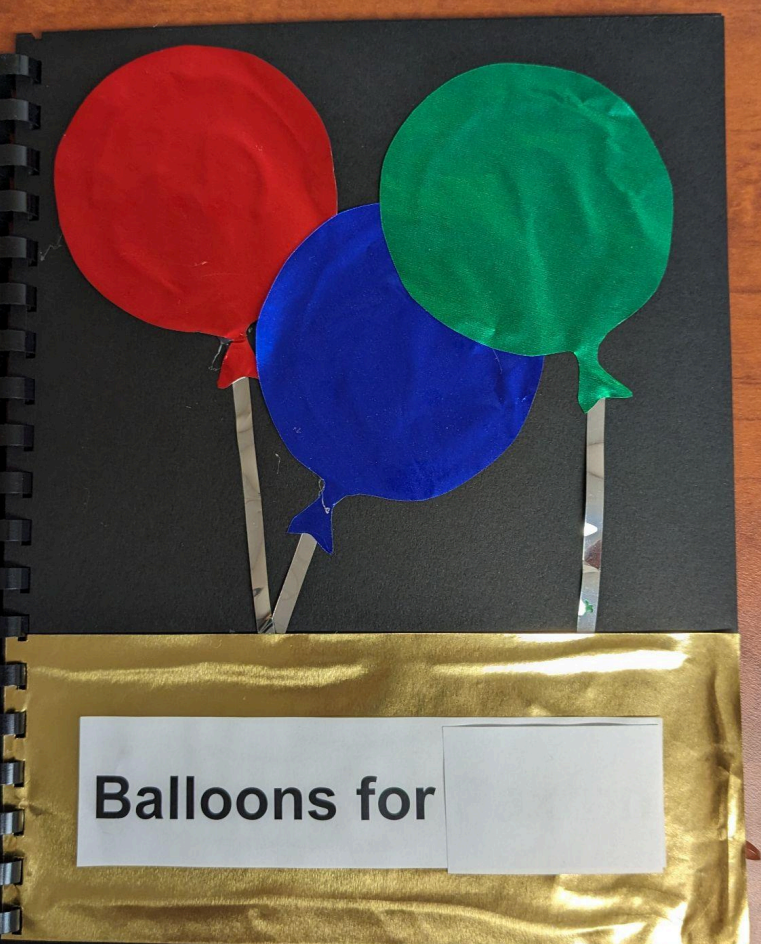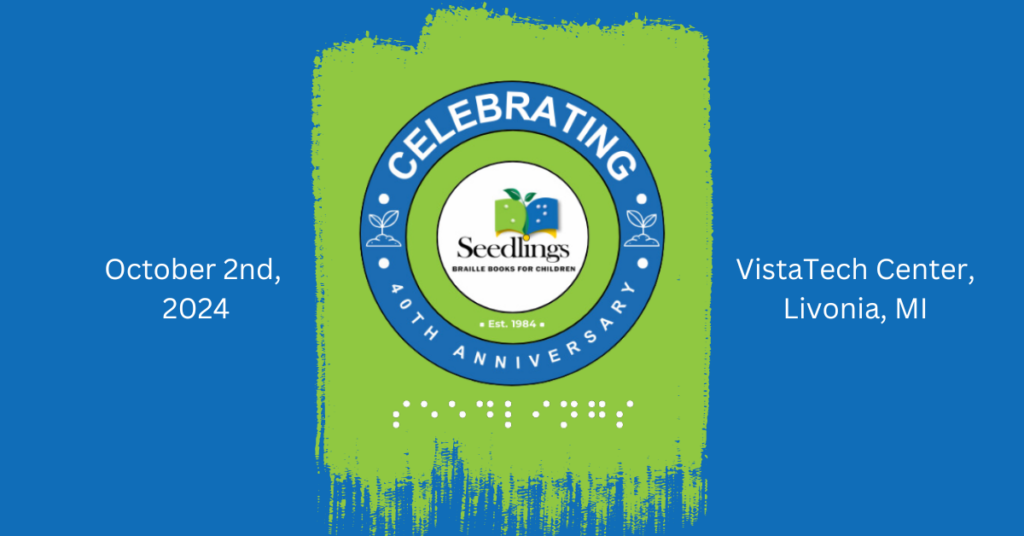 This is the third part of a 3-part series on Yoga and Literacy. See also Using Yoga to Support Language and Literacy Development and Yoga Activities to Increase Literacy Skills.
This is the third part of a 3-part series on Yoga and Literacy. See also Using Yoga to Support Language and Literacy Development and Yoga Activities to Increase Literacy Skills.
One application of yoga which I have especially enjoyed as a speech language pathologist is in the area of narrative language. Students who are visually impaired have worked together to build a variety of imaginative and meditative stories and mantras which are inspired by the movements, “characters” and sounds of the yoga activities we do together.
Imaginative Stories
Pretend stories can be developed in groups or with one student and a teacher. Usually, the students work together with either a teacher or each other to generate imaginative stories inspired by poses or “asanas” they have practiced in regular yoga routines. In children’s yoga, and in some adult yoga approaches, the poses are often taught as animals (e.g., “cat-cow”, “cobra”, “frog”, “butterfly,” “bird”, “elephant.”), geographic or natural features (forest, trees, volcano, earthquake, sunflower). For many children with visual impairment, these story elements are quite abstract—they may have heard of a lion or a mountain, but never seen or experienced them. As they use their bodies to represent these characters, settings and natural features, the student who is blind comes one step closer to an understanding of concepts that other children obtain incidentally through their observations of the world around them. Older children and adolescents who are blind, especially those with additional disabilities such as autism, may have missed this important early childhood activities which involve “pretending to be” something or somebody else. Their use of their bodies representationally often provides an excellent starting place for imaginative story development.
Most students begin with learning a few asanas or poses, and, with adult facilitation, begin to weave these characters into pretend play stories with characters, settings, sequences of events, and problems or themes. It may be helpful to begin by modeling a story that has already been written, enacting each step along the way. Some examples of pre-written yoga stories may be found in Shakta Khalsa’s book Fly Like a Butterfly (1998), Sidney Solis’ Storytime Yoga (2006) and also in a chapter in my book Better Together (2008). Just as in play, the themes or problems that emerge in the yoga stories often reflect the students’ own emotional or social concerns.
I will describe the interactions around creating one story—“The Lonely Butterfly”. The students had practiced several of the animal poses and the “mountain” ( I often teach down dog as a “mountain” because it conveys the shape and strength of the mountain more concretely than the “mountain pose” (“Tadasana”) taught in hatha yoga. We usually begin by collecting characters, and a problem—the kids generated the butterfly and the animals that might be potential friends for the butterfly. They also came up with the idea of “looking for friends” as a theme (I added the word “lonely”, and they affirmed that this would be appropriate). I helped to create a repetitive predictable structure in which the butterfly goes up a mountain, into a forest, and asks animals one at a time to be his friend, and we discuss the problems with each animal (elephant is too big, snake sleeps all day, etc.). He finally goes to the forest, finds a tree and a bird, and makes a friend because the two have something in common—their ability to fly. The story was used to support future yoga classes, and the students took turns being the storyteller/ guide for the group. The story was produced in large print and braille with pictures and tactile symbols to illustrate it and cue sequencing. The students produced other stories such as “The butterfly who couldn’t find a Halloween costume,” “The snake who couldn’t sleep in the daytime.” These stories were used to support yoga practice and for many of the students the story seemed to facilitate movement.
The Lonely Butterfly
The butterfly flew in the sky. The butterfly felt sad and lonely because he wanted some friends. So he asked his mom. “Oh, I’m really bored. What can I do?” His mom said, “Go find yourself some friends.”
First, he went to see the elephant. He asked the elephant, “Will you play with me?” The elephant said, “No! I move too slowly. You fly very fast!”
Next he went to see the lion. He asked the lion, “Will you play with me?” The lion said, “I’m too busy breathing lion breath and singing ‘I Am Brave, I am Bold.’ ” The butterfly went on.
Next the butterfly went to see the dinosaurs. He asked the dinosaur, “Will you play with me?” The dinosaur said, “You can come with me for a dinosaur walk.They went for a walk together, but the dinosaur and his friends were very BIG!
The butterfly went up on the mountain to rest in a tree. He found another friend who could fly–the bird. The bird was lonely too, so they had a nice time flying and flying together.
The End
Develop the Story Before Adding Movements
Another way to approach story development in yoga is to develop the story first, before teaching the movements. An example comes from a student who had extreme difficulty with movement and found yoga to be her least favorite activity. She protested wildly and often refused to come to our yoga group. She was an excellent braille writer and loved to create stories, and I decided to use this strength to shape her participation in the movement activities involved in yoga. Before going to class, earlier in the week, she and I developed yoga stories and she brailled them to bring to class. Initially, her only goal was to read the story to the group, then we increased the role to include checking poses for the others in the group to be sure they were correctly enacting her story. Finally, she was able to use words to describe the poses, and these words seemed to support her ability to actually perform and demonstrate the poses for the others. The Lonely Butterfly is a sample of a story she helped to create (Yoga asanas/ poses which were enacted by the group are shown in bold).
Mantras
Another form of writing I’ve explored lately is the development of mantras (here defined as “rhythmic chants”) as a form of positive self talk. I begin by introducing students to some simple mantras that have already been recorded—some of my favorites are “I am happy, I am good,” “I am brave, I am bold,” and “sa ta na ma” which are available through Shakta Khalsa’s website. When they have practiced these mantras with movements, I ask them to make their own mantra, and we practice it as a group. For example, one student who had recently become interested in power lifting substituted “I am active, I am strong” for the words in the “I am happy, I am good” mantra. Another, shown in the video clip here, is using the words “I am friendly, I am smart” to describe himself. When teaching these mantras, I try to embed movement patterns with them, such as the sa ta na ma mudra because the repetition and the multimodal input often helps the words to “stick.” I tell the kids that whenever they start feeling bad about themselves, they can pull up these movements and words to replace the “stinkin’ thinkin’” that is getting in their way. I have been surprised to see that students sometimes remind one another of their own mantras when approaching difficult situations, and the students are learning to use the mantra for self-regulation (another reason that the hand movements or body movements are important—they can use these in quiet situations in class or pubic).
Download the transcript of the Affirmation Mantra video.
Meditations
Again, Shakta Khalsa has provided some nice samples of meditations for verbal students in her CDs Rainbow Walk and Relax. I use these as examples, and then ask students who enjoyed them to create their own. After listening to a very peaceful Beach Story, one group wanted to create a beach story for students who were blind that focused only on the smells, the feel of the wind and sand, and the sound of the ocean, rather than the visual references in the original meditation. Another student said that she preferred the forest, and her forest meditation is shown here. This student has autism, and her challenges are in self-regulation and in connecting to others. She was able to address both of these by building a partner into the meditation (leaning back-to-back against her partner, the “tree trunk”), and by sharing the meditation with her class.
Katrina’s Forest Meditation
Imagine you are in the forest. You sit under a tall tree and lean your back against the trunk. Trust the tree trunk to hold you up and relax against it. Take a deep breath and smell the pine trees in the forest. Listen and hear the wind rustling through the pines. Feel grass beneath you like a warm bed. Stay very still and keep breathing, listening and feeling. Breathe, Listen, Feel. Breathe. listen, feel. Sometimes when you breathe you can smell flowers starting to bloom, and sometimes when you listen, you can hear birds chirping to each other. Sometimes when you feel with your fingertips, you find ferns and moss, soft as a blanket. Breathe, listen, feel. Breathe Listen Feel. Breathe, Listen, Feel. Turn and put your hand on the tree trunk’s shoulder, Pull yourself up and continue your walk in the forest.
Download the transcript of the Katrina Forest video.
Sometimes, it is fun to blend imaginative stories, mantras and meditations together to create “hybrid stories” which embed the mantras or meditations into imaginative stories. In the next post in this series, I will show you some examples of these self-regulation pretend stories.
References:
Gillen, J. and Gillen, L (2007) Yoga Calm for Children: Educating Heart, Mind, and Body. Three Pebble Press.com: Portland OR. www.yogacalm.org
Hagood, L. (2008) Better Together: Building Relationships with People who have Visual Impairment and Autism. TSBVI: Austin, TX.
Khalsa, Shakta Kaur (1998) Fly like a butterfly. Sterling Publishing Co: New York, NY. childrensyoga.com
Maloney, Kassandra. (2016) Yoga For Children with Visual and Multiple Impairments: Fun Movement Activities Inspired by Yoga. TSBVI: Austin, TX.
Roberts, L. (2014) Breathe, Chill: A Handy Book of Games and Techniques Introducing Breathing, Meditation and Relaxation to Kids and Teens.
Solis, Sydney (2006) Storytime yoga: Teaching yoga to children through story. www.storytimeyoga.com.
Thapar, M. and Singh, N. (2004) Good Morning Sun: Yoga for Children with Fun-Filled Stories. Brijbasi Art Press: Uttar Pradesh, India. brijbasi@bol.net.in





